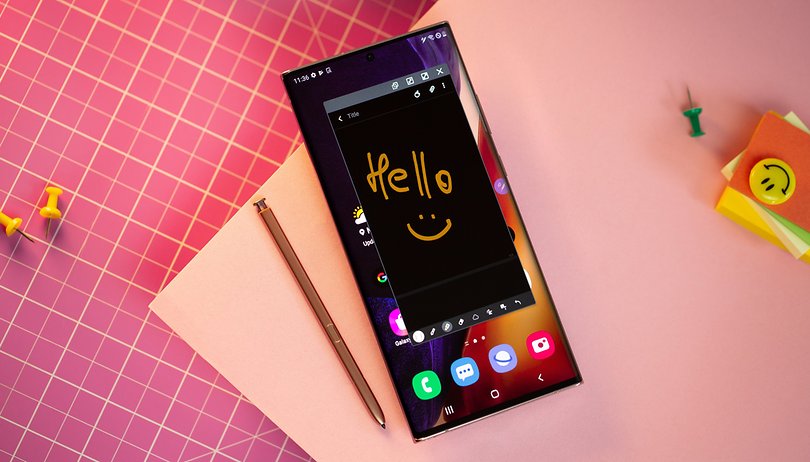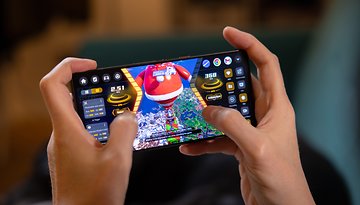Why Samsung Galaxy Note's demise is more a sign of hope than failure


According to a series of leaks that made its way to the Internet on November 12th, Samsung could abandon its illustrious Galaxy Note 21 phablet range. The reason behind such speculation? It could be assimilated into the classic Galaxy S21 flagship range from or after 2021. This is a decision that seems outright logical and even natural considering how in my opinion, it is not motivated by the commercial failure of the Galaxy Note 20.
It would come across as no surprise to anyone if you regularly read my opinion posts and reviews - I have a grudge against the Samsung Galaxy Note 20. Its lack of relevance in the South Korean giant's catalogue outraged me at the time of its release, and my review did not make me change my mind at all.
It's not a bad smartphone in my opinion, but there are definitely one too many flagships on Samsung's shelves in 2020. It has too little punch compared to the Galaxy S20, especially when you consider a quality/price ratio that remains disconnected from the market reality at this price range.
Fanboys will surely laugh in my face, or show their contempt in comments (which I will happily ignore). But the sharply reduced production figures of the Galaxy Note 20 (70% of the initial target expected in October 2020), makes me think that my opinion is not that erroneous.
However, it is not this pinpointing of failure that in my opinion and should the rumour be confirmed, motivates the hypothetical (nothing is confirmed, as far as I can recall) abandonment of the Samsung Galaxy Note 21 in favour of the Galaxy S21.
Samsung Galaxy Note 21: Why does it deserve to exist?
I've been talking a lot about the shift in the range where the smartphone market is concerned based on what smartphone manufacturers churn out. The addition of an extra iPhone 12 mini, touted as Apple's entry-level top-of-the-line device when it's priced at the same level as the 2019 iPhone 11, is one of the most recent examples. It's just an extra iPhone, not any more affordable, but one that makes you forget about the €100 price increase of the normal iPhone 12.
We can also mention the premium route that was taken by the OnePlus 8/Pro and the Xiaomi Mi 10, undermining the reputation of these two brands as "price breakers" (Have you noticed? I didn't use the ugly catchphrase "flagship killer", you're welcome).
Just like the idea of a flagship killer, which has almost totally lost its substance, the concept of a flagship device has been losing its identity for years. This is all the more noticeable when a manufacturer rolls out three ranges under the flagship category, with two or even three models per range just like Samsung.
In the year 2020, if you want a high-end Samsung smartphone, you have to choose between the three Galaxy S20, S20 Plus, S20 Ultra, and S20 FE, the two Galaxy Note 20 and Note 20 Ultra, or the Galaxy Z Flip and Z Fold 2. The Galaxy Z range, Samsung's foldable smartphone range, is clearly identifiable though, therefore not making it a problem.
But when the Galaxy Note 20 offers lower specs (60 Hz screen, plastic back, etc.) compared to the Galaxy S20 when it is supposed to be more premium than the latter, one can wonder about its relevance.
Why does the Samsung Galaxy Note 21 deserve to exist alongside a Galaxy S21 if the latter embeds an S-Pen, the only real selling point of the Galaxy Note to date? This would be especially quaint, and I dare say it without hesitation, that the Galaxy Note 20 is device beneath the Galaxy S20 in the Samsung smartphone pecking order, but with a stylus as the only distinguishing feature.
A natural and unconscious shift in scale has reached an end
In my opinion, this is not a voluntary decision on the part of Samsung. No manufacturer wants to launch a product without being convinced that it is good and will sell well. But it's simply an unconscious and natural shift in a product line that has arrived at the end of its life. You can't slip and fall forever though. No matter how long the fall, landing is inevitable.
So I don't think Samsung's potential decision to integrate an S-Pen into the next Galaxy S21, effectively rendering the Galaxy Note 21 obsolete, is a direct consequence of the failure of the Galaxy Note 20. If Samsung makes the choice to perform this transition, it will certainly not be on a whim. Nor will it be a knee-jerk reaction to a simple commercial setback, especially in this Covid-19 environment where every manufacturer has suffered.
No, it's just that the Galaxy Note range has come to an end. Samsung has surely considered the possibility of merging the Galaxy S and Note ranges on numerous occasions, and this might have gone on for several months or perhaps even years. The manufacturer can't be blamed for not having anticipated the half-hearted reception of its Galaxy Note 20 range, nor can it be blamed for having marketed them.
This relative failure was necessary to kickstart a decision that had been in Samsung's pipeline for a long time. The Galaxy Note 20 is not the reason for the hypothetical abandonment of this range by Samsung. It may be the trigger, the last alarm signal, or even the culmination of a range shift that has been going on for years.
But more importantly, it would be good news for us consumers. Samsung's catalogue would be much clearer and less convoluted if the manufacturer decided to prune the superfluous branches. Isn't creative destruction the product and, above all, the driving force behind all technical progress and economic growth?




















The onboard storage of the stylus is a nice thing. I hope that is carried on in at least one of the range. I prefer the magnetic induction field stylus of yore compared to the bluetooth method they've gone to. I thought it was more elegant and precise.